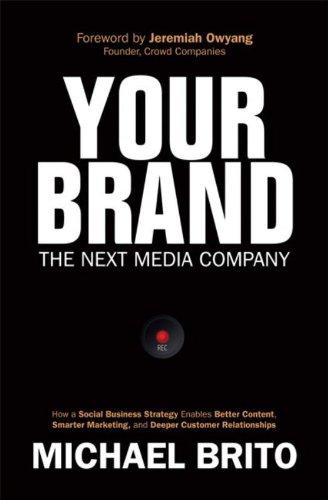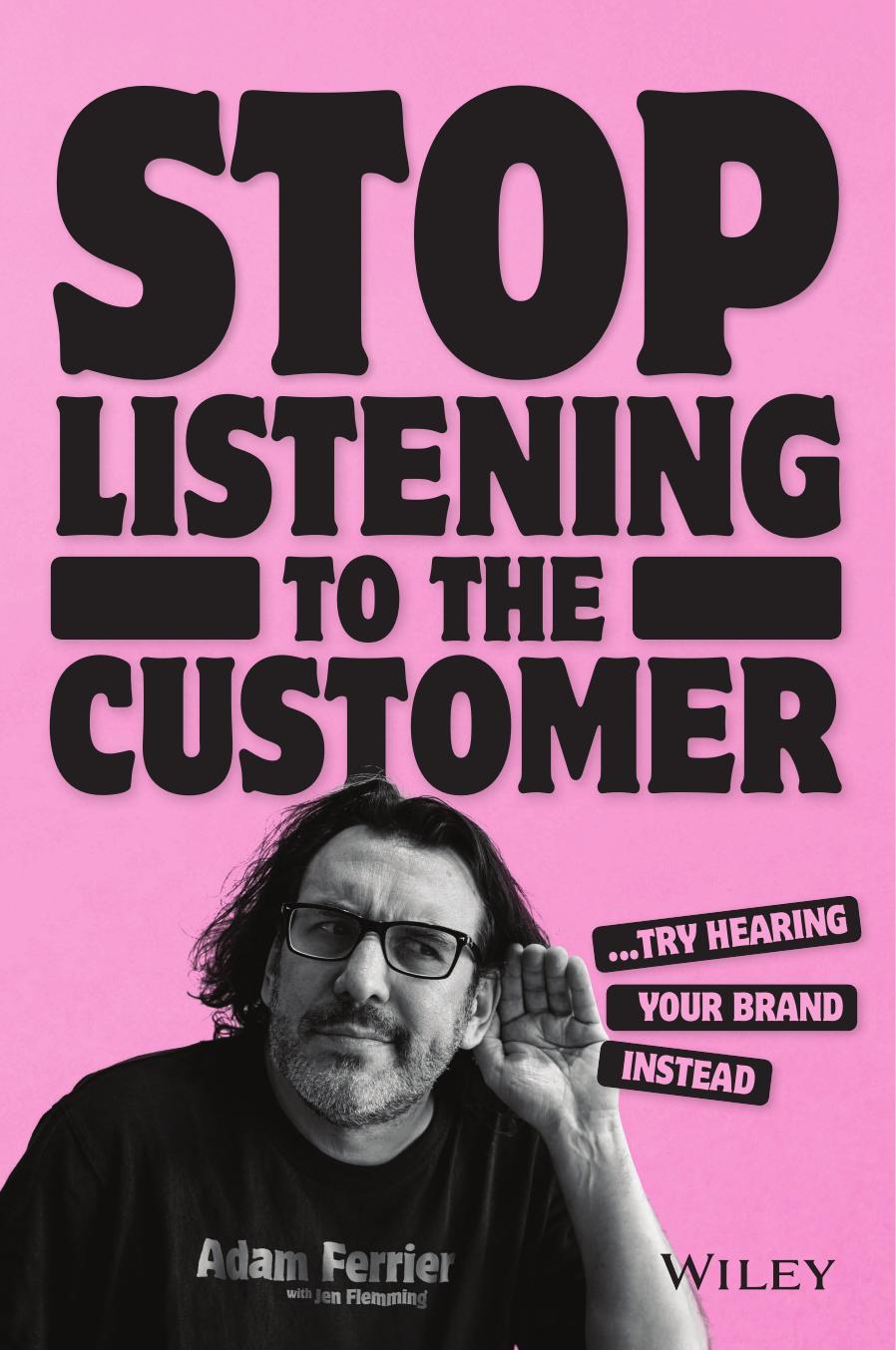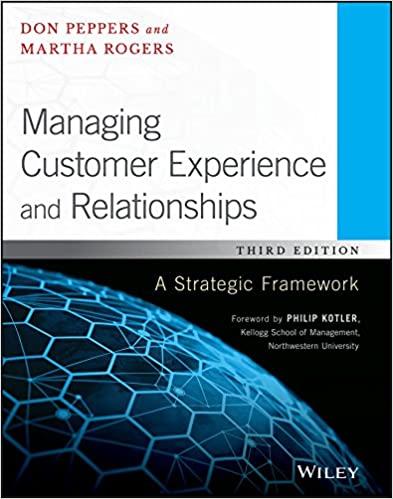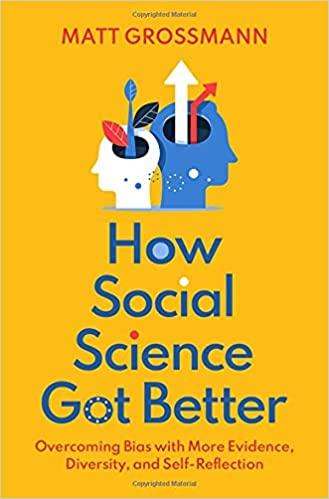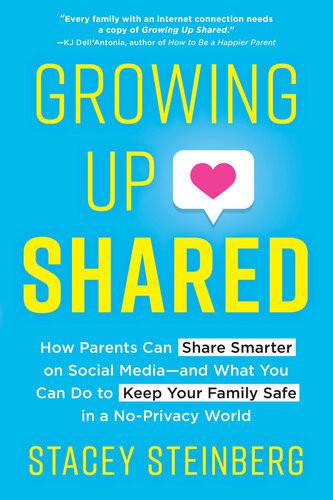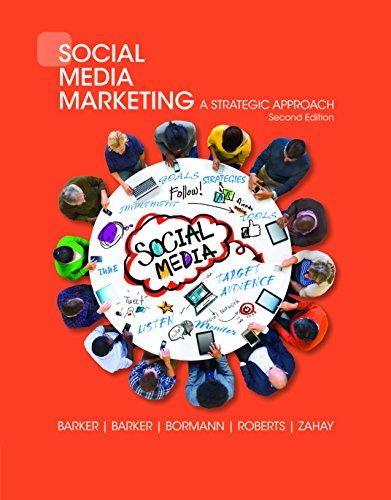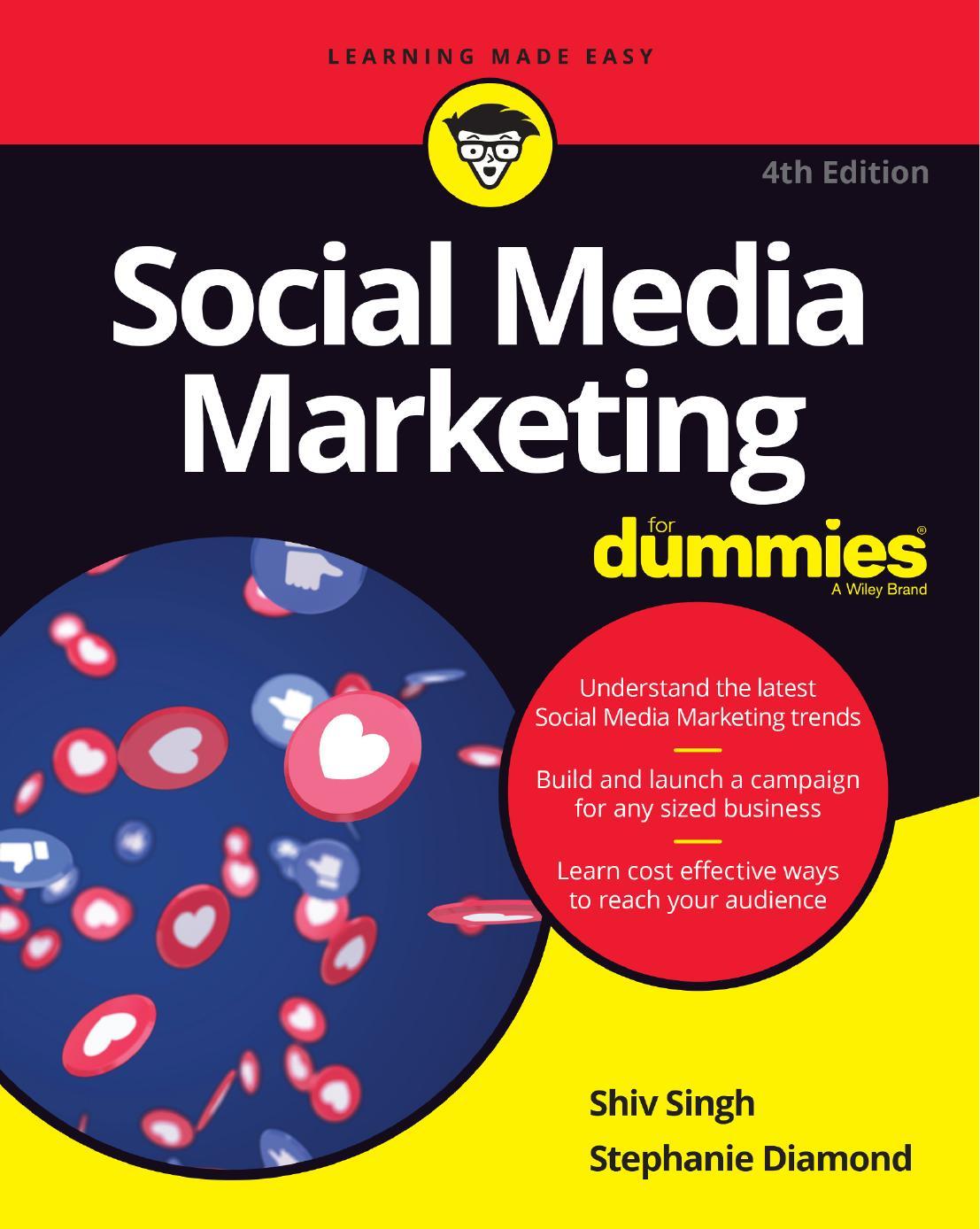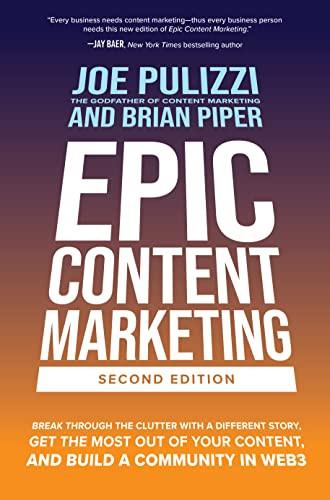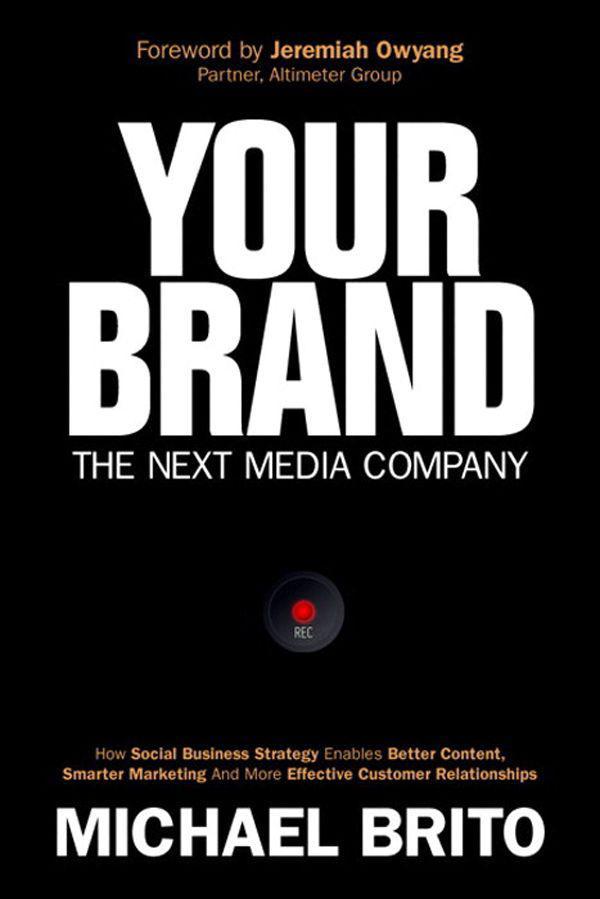Praise for Your Brand, The Next Media Company
“There’s a difference between being a thought-leader and a doleader. Thought leaders can tell you what you should be doing, but often have no practical, real-world experience translating thought into action. Do-leaders, on the other hand, are seasoned professionals who base their advice on what they’ve accomplished and failed at—a huge value add for any organization. Michael Brito, Senior Vice President of Social Business Strategy at Edelman Digital, is the epitome of a doleader.
“In his book, Your Brand, The Next Media Company, he concisely breaks down one of the biggest challenges brands face today: developing, and more importantly living, their content strategy. By deftly tying team roles and responsibilities to the management of converged media programs, he takes a three-dimensional view of content strategy that’s usually missed out on by leaders who push for ideals over ideas. And unlike some tell-all handbooks with little to offer besides tired to-do lists and recycled suggestions, he does it through intelligentlystructured narrative that’s peppered with applicable, pragmatic advice. Your Brand, The Next Media Company belongs on the bookshelf of every CMO.”
Jascha Kaykas-Wolff, Chief Marketing Officer, Mindjet
“Brito has written a practical and thoroughly engaging book for brands looking to effectively become a media company using a sustainable social business strategy. Whether early in the process or evolving your current approach, Brito’s holistic view provides actionable insights to help you navigate both the internal and external challenges we all face. I recommend this
book to anyone who wants their brand to remain relevant in a world where meaningful and authentic connections with social customers are now tables stakes!”
—Amy Kavanaugh, Vice President Public Affairs, Taco Bell (YUM Brands)
“Whether your business is selling widgets or services, success depends on thinking more in terms of delivering stories about those widgets or services and how people use them than about pumping out feature-rich fact sheets or ads. Your customers want to hear those stories, so find more ways to tell them! Reach out to your brand advocates and collaborate with them, and don’t forget to include quality of engagement in your metrics for a better overall view of how you’re doing. In other words, think like a publisher—you’ll get better results. In his book YourBrand,TheNextMediaCompany, Michael Brito walks you through this process and tells you how to get it done. A must-read for any marketer in this quickly evolving social world.”
Ted Rubin, Chief Social Marketing Officer, Collective Bias
“The future of digital media is alive and well, and it’s you. In Your Brand,TheNextMediaCompany, Michael Brito provides a clear roadmap for transforming your business into a more relevant, social, and meaningful media company. He has followed up a fantastic book on social business with a roadmap for transforming your company into an agile, ubiquitous, and relevant content machine; and he covers all bases from social business to content marketing to structuring your organization for success.”
—Lee Odden, Founder and CEO of TopRank Online Marketing
“Every company is a media company, no matter your business model. I’ve been preaching this for over 7 years, and Michael Brito offers one of the most lucid and useful resources on the topic yet. Buy this book, you won’t regret it.”
Brian Clark, CEO of Copyblogger Media
“Content Marketing is no longer just a concept, it’s a way of business. Whether you are small business, nonprofit, or a large corporation, you need to read this book to learn the why and the how to setup your organization to become a media company. Michael Brito’s experience and expertise are second to none, and he provides expansive and detailed approaches that are applicable to everyone.”
—Adam Hirsch, Executive Vice President, Edelman Digital
“An incredibly accurate assessment of the social customer and the challenges we face today in garnering their attention. Brito captures the very essence of what it takes for brands to cultivate awareness and loyalty in today’s saturated content marketplace. Packed with first-hand knowledge from tenured marketing and agency executives, this text is a must-read for anyone invested in tackling the content marketing space and making a true impact on the industry and, most importantly, the consumer.”
Shafqat Islam, Cofounder and CEO of NewsCred
“Yes, we are all media companies now...but so many brands don’t know how to make this important transition. Take this book, read it, and put it under your pillow. This book will transform your marketing from ‘also ran’ to dominating your informational niche. Now is the time!”
Joe Pulizzi, Founder, Content Marketing Institute
“Social media is causing a fundamental shift in the structure of business—both internally and externally. At this tumultuous time, Your Brand, The Next Media Company provides a clear map to guide your organization through the decisions you need to make NOW to ensure you stay relevant and evolve into a media company.”
—Josh March, Cofounder and CEO of Conversocial
Table of Contents
Foreword
Introduction: Why This Book Matters Right Now and for the Next Several Years!
Why I Wrote This Book
How This Book Is Organized
Section 1: Understanding the External and Internal Landscape
Section 2: Setting the Stage for Social Business Transformation
Section 1: Understanding the External and Internal Landscape
1 Understanding the Social Customer and the Chaotic World We Live In
We Live in a Multi-Screen Economy
CADD (Customer Attention Deficit Disorder) Is Among Us
Relevance Is the Key to Content Consumption
The Customer Journey Is Dynamic
Customers Are Influential
Business Objectives Stay the Same Despite the Changes Externally
Vendor Spotlight—Social Flow
2 Defining Social Business Strategy and Planning
The Social Media “Bright and Shiny” Object
Social Media Has Caused Internal Business Challenges
Employees’ Inappropriate Use of Social Media
Internal Confusion About Roles and Responsibilities
Inconsistent Social Media Measurement Practices
Outdated Crisis Communication Models
Expanding Social Media Programs Globally Without Proper Planning
Disjointed Content and Community Management Practices
The Daunting Task of Technology Selection and Adoption
Nonexistent Content Governance Models
The Three Pillars of Social Business: People, Process, and Platforms
The Social Business Value Creation Model
The Differences Between a Social Brand and a Social Business
Vendor Spotlight—Sprinklr
Section 2: Setting the Stage for Social Business Transformation
3 Establishing a Centralized “Editorial” Social Business Center of Excellence
A Lesson from Tesla Motors
Building Your Social Business Center of Excellence (CoE)
The Responsibilities of a Center of Excellence
The Organizational DNA and Team Dynamics
Considerations for Building a Social Business Center of Excellence
How the Center of Excellence Integrates into Your Organization
Vendor Spotlight Jive
4 Empowering Employees, Customers, and Partners to Feed the Content Engine
An Overview of Employee Advocacy
Advocacy, Trust, and Credibility Are Synonymous
Employees as Brand Journalists
An Overview of Customer Advocacy
How to Scale and Plan an Enterprise Advocacy Program
Program Infrastructure
Content Strategy
Measurement
Technology
GaggleAMP Helps Scale Employee Advocacy
Napkin Labs Helps Scale Customer Advocacy
Pure Channel Apps and the Channel Partner Content
Opportunity
Vendor Spotlight—Expion
5 Building Your Social Business Command Center
The Strategic Importance of a Social Business Command Center
The Social Business Command Center Framework
How to Build a Social Business Command Center
Discovery
Planning
Implementation
Reporting
Kaizen
Social Business Command Centers in Action
University of Oregon
Cisco Systems
Clemson University
American Red Cross
Gatorade
The New Form of Command Center Operations: Real-Time
Marketing
Not Everyone’s Onboard with Real-Time
Real-Time Marketing Technology
Vendor Spotlight: HootSuite, MutualMind, PeopleBrowsr, Tickr, and Tracx
HootSuite
MutualMind
PeopleBrowsr
Tickr
Tracx
6 Understanding the Challenges of Content Marketing
Examples of Brands Taking Content Marketing to the Next Level
Virgin Mobile
American Express
Marriott
L’Oréal
Vanguard
Content Marketing Challenges: What the Experts Say
Nestle Purina
AARP (American Association of Retired Persons)
Kellog
Cisco
Capri Sun
Mindjet
Sears
Kinvey
Ricoh
ArCompany
Content Marketing Challenges: What Does the Data Show?
Moving Past the Content Marketing Buzzword
Vendor Spotlight—Kapost
Section 3: Developing Your Content Strategy
7 Defining Your Brand Story and Content Narrative
The Inputs Needed to Build Your Content Narrative
Brand Messaging & Product Benefits
The Non-Business Issues Important to Your Brand
Media Perceptions of the Brand
Community Perceptions of the Brand
Fan Interests
Historical and Current Content Performance
Consumer Search Behavior
Customer Service Pain Points
The Output Should Equal Your “Hero” Content Narrative
Simplifying Your Content Narrative
Vendor Spotlight—Compendium
8 Building Your Content Channel Strategy
Finding and Preventing Gaps with Your Social Media
Channel Strategy
Mapping Your Content Narrative to Social Channels
Building Your Content Tiers by Channel
Laser Focused Storytelling by Channel
Diversifying Your Content Types per Channel
The Importance of Visual Storytelling
The Importance of Long-Form Content When Telling Stories
Search Engine Visibility
Thought Leadership
Striking a Balance Between Long-Form and Short-Form Storytelling
Best Practices for Writing Long-Form Content—It All Starts with the Title
Vendor Spotlight—Contently
9 The Role of Converged Media in Your Content Strategy
Defining Converged Media
Why Converged Media Is Important to Your Content Strategy
Converged Media Models
Facebook Promoted Posts (News Feed Marketing)
Content Syndication
Earned Media Amplification
The Promise of Real-Time Marketing
Real-Time Marketing Is More Than Just Being in Real Time
The Creative Newsroom
Creative Newsroom 5-Step Activation Process
Creative Newsroom Models
Vendor Spotlight—Newscred
10 How Content Governance Will Facilitate Media Company Transformation
Defining Content Governance
Building an Effective Collaboration Model
Proactive Content Workflows for Planned and Unplanned Content
Reactive Escalation Workflows and Risk Assessment
Governing New “Brand” Account Creation
Managing the Security of Social Media Passwords
Vendor Spotlight—Spredfast
11 Structuring Your Teams to Become a Content-Driven Organization
A Quick Lesson in Change Management
Tearing Down the Organizational Silos
Identifying Roles and Responsibilities
Structuring Your Content Organization by Channel
Structuring Your Content Organization by Brand or Product
Structuring Your Content Organization by Region
Structuring for Converged Media and Real-Time Marketing
Choosing the Right Technology Platforms
Content Marketing Platforms
Social CRM/Content Publishing Platforms
Online Monitoring Vendors
Vendor Spotlight Skyword
Step 1—Recruit and Manage Your Writers
Step 2—Plan Your Content Strategy
Step 4—Create and Optimize Your Content
Step 5—Edit and Review Your Content
Step 6—Promote Your Content Socially
Step 7—Measure and Analyze the Performance of Your Content
Index
Foreword
The diet for media consumption by your customers is ferocious.
Are you properly feeding them before your competitor does?
Newsfeeds, inboxes, streams, and apps mean that people take in lots of information in a rapid pace. Unfortunately, most corporations have yet to catch up with this trend, as they slowly move forward with static websites, lengthy white papers, and tiring press releases.
Consumption preferences aren’t the only thing that’s changed, as people themselves are media engines, creating content to connect to their trusted peers and confidants. Together, the market is talking to itself, but many companies are unable to keep up.
Companies must change. They must become like media brands, and become publishers, content creators, and newsrooms themselves. To do this isn’t easy, you need a purpose, a plan, a process, and the right people.
This is why this book, Your Brand, The Next Media Company matters.
Because you must develop the right content, improve your marketing, engage your customer relationships in a deeper way, in their terms. Michael’s book answers why and how by illustrating the changes in the space, provides pragmatic advice by advising on change management, process/workflow creation, and technology.
What makes Michael credible? I’ve worked with Michael when he was my client at Intel. Together, we partnered on a study to measure the social behaviors of its customers, when I was an industry analyst at Forrester research.
Not only was Michael a practice leader from one of the top media brands in the world, he was an educator, as I’ve seen him speak at Stanford, address audiences at events, and be a community leader in the Silicon Valley space.
Today, Michael brings together market thought leadership, but tightly winds it with pragmatic insights from working with his own clients at Edelman, and shares his viewpoints on his own website, the Social Business Blog, Britopian. I consider Michael a friend, a respected peer, and an industry leader.
So get out there, read this book, earmark important pages, highlight key sections, and activate Your Brand to become a media company.
Let’s feed our customers with the media they desire.
Jeremiah Owyang Industry Analyst
About the Author
Michael Brito is a Group Director at WCG, a W2O Group company. He is responsible for helping clients transform their brands into media companies by implementing social business strategic initiatives that operationalize content strategy, scale community management, and integrate paid, earned, and owned media initiatives. Prior to WCG, Michael worked as a Senior Vice President of Edelman Digital and also for large, influential brands in Silicon Valley, such as Hewlett Packard, Yahoo, and Intel, where he was responsible for consumer social media marketing and community building. Very early on in his career, his role was focused on search marketing (paid and natural) and digital marketing. He has been building external communities ever since and believes that brands should focus on turning friends, fans, and followers into brand advocates and storytellers.
Michael is a frequent speaker at industry conferences, as well as a guest lecturer at various universities including the University of California, Berkeley; the University of San Francisco; Stanford University; Syracuse University; Golden Gate University; and Saint Maryís College of California. He is also an Adjunct Professor at San Jose State University and UC Berkeley teaching social business and strategic social media.
Michael has a Bachelor of Arts in Business degree from Saint Maryís College and a Master of Science, Integrated Marketing Communications degree from Golden Gate University. He is also the author of Smart Business, Social Business: A Playbook for Social Media In The Organization, which was released in July 2011. He proudly served eight years in the United States Marine Corps.
Dedication
Thisbookisdedicatedtothethree mostimportantpeopleinmy life —my wife, Kathy, andtwodaughters,MilanandSavvy. Kathy, thank you for supporting me all these years. I couldn’t do what I do without your love, support, and encouragement. Milan, you will always be my princess, theair I breathe. Your smilebringsjoy and warmth to my heart. Savvy, my next book will be one that we do together . Thankyou for always wanting to sit on my lap, climb on my back, and snuggle with me on the couch. I cherish those moments. Thankyou allfor loving me andmakingallthebadguys goaway.
Acknowledgments
First, I want to thank my mentor Jeremiah Owyang for writing the Foreword of this book. I have learned a lot from you over the years and I am grateful for your friendship.
I also want to thank several of the vendors that helped me with various chapters specifically, Sprinklr, Social Flow, Jive, Spredfast, Expion, Compendium, GaggleAMP, Napkin Labs, Kapost, Outbrain, Skyword, Tickr, Tracx, Newscred, HootSuite, Contently, Mutual Mind, One Spot, and InPowered. There are too many of you personally to name but I really do appreciate your support. You know who you are!
A special thank you to Joe Chernov, Ann Handley, Jascha KaykasWolff, Sean McGinnis, Michael Brenner, Sandra Zoratti, Jeff Elder, Danny Brown, Carla Johnson, and Dave Kerpen for your help and contributions to various portions of the book.
Lastly, I want to thank the special people who spent time reviewing my book and suffered reading through all the documentation that I had sent along. I am very humbled and grateful for each of you:
• Jascha Kaykas-Wolff, Chief Marketing Officer, Mindjet
• Pete Cashmore, CEO, Mashable
• Elisa Steele, Chief Marketing Officer, Skype (Microsoft)
• Amy Kavanaugh, Vice President Public Affairs, Taco Bell (YUM Brands)
• Shafqat Islam, CEO, NewsCred
• Brian Clark, CEO, Copyblogger Media
• Ted Rubin, Chief Social Marketing Officer, Collective Bias
• Ann Handley, Chief Content Officer, MarketingProfs
• Lee Odden, Author of Optimizeand CEO, TopRank
• Mei Lee, Vice President, Digital Marketing, Conde Nast
• Adam Hirsch, Senior Vice President, Edelman Digital
• Kinsey Schofield, TV Personality, Journalist
• Joe Pulizzi, Founder, Content Marketing Institute
• Joshua March, CEO, ConverSocial
Thank you again for your gift of kind words.
Introduction: Why This Book Matters Right Now
and for the Next Several Years!
“Tweetable Moment: Everyone is influential and through everyday conversations we influence others down thepurchase funnel.”
—#nextmediaco
About a year ago, I bought a special gift for my six-year-old daughterSavvy for herbirthday. Hisname isBailey, andheisa Teacup Yorkie. He was the cutest puppy ever, and we have taught himhowto sit, shake, liedown,and rollover. He’s wellbehavedandsuperspoiled,andhehascertainlybecomeamajor partofour family. Ifyou andIare friendson Facebook,Twitter , orInstagram,youalreadyknowthis.
In the summer of 2012, we were planning a trip to Arizona to seemymomandsisters.MyfirstthoughtwasBailey. Dowetake him with us? Do we leave him in a kennel or find him a babysitter?Iwasn’tabouttoleavemynewlyadoptedsonwitha stranger, andunfortunatelywe didn’thave anyone towatchhim forafewdays.Idecidedthathewouldjoinus,butIwasn’tsure which airline was dog friendly. After all, he was our first family pet.
SoIhitupGoogleasInormallydoinsituationslikethis.
My first search query was something like “airlines that treat dogs safely,” but nothing of value came up. After about five minutes of searching, I came across an article that horrified me. The article, “More Pets Died on Delta Flights in 2011, but Why?” was straight from Yahoo!:
More pets died on Delta flights in 2011 than on any other airline, a government report reveals.
The report, issued each year by the U.S. Department of Transportation, shows that 19 of the 35 air travel–related pet deaths in 2011 took place in the baggage holds of Delta planes, up from 16 in 2010. Five pets were also injured on Delta in the same year, more than on any other airline.
After reading the full article, it was obvious that the pets’ owners may have been as much to blame as the airline. But still, the only thing that stuck was that 19 of 35 air travel–related deaths happened on Delta Airlines in 2011, which was also up from 16 in 2010. So I did what a normal social media user would do and solicited feedback from my online community; I also tweeted the article and mentioned Delta a few times. Several of my friends then had some misgivings about giving their future business to Delta without clarification or explanation about this report. One friend even sent me a private note afterward and told me about his personal horror story with the airline.
So I booked our family trip with Southwest.
I can’t be certain there wasn’t some technology glitch, but no one from Delta ever responded—not a word from marketing, customer service, or management—all silent.
The point here is that everyone is influential despite your Klout score or how many friends, fans, or followers you have. Me, you, people who use Twitter and Facebook or don’t use Twitter and Facebook, online and offline. Through everyday, random and organic conversations, we influence others to buy certain products or services or to not buy certain products or services. And these conversations are based on our personal experiences that we have with a brand on a given day. We either influence others or are being influenced by others—it’s the world we live in today. Even if someone from Delta responded and said that they were taking measures to prevent situations like this in the future, it doesn’t necessarily mean I would have changed my mind, although I certainly would have taken it into consideration.
We are not only influential, but we are also busy. There is a content and media surplus in the marketplace and most consumers
have an attention deficit.
Every day, consumers are so inundated with media, social connections, status and relationship updates, event invites, tweets, retweets, mentions, direct messages, +1s, likes, loves, texts, emails, alerts, and other random noise that we purposely create filters so that we only consume the content that is relevant to us at a specific moment in time. And the fact that we must hear, see, or interact with a message three to five times before we acquiesce to it becomes extremely problematic, especially for those who work in brand or marketing communications.
So for you to reach the dynamic and unpredictable nature of consumers today, you must begin to think,communicate,andmarket your products differently. Traditional marketing tactics alone cannot effectively reach consumers. A 30-second television spot during the Super Bowl is nice, but it’s not going to turn around a failing brand— neither will a clever tweet during the half-time show. Aggressive social media marketing won’t work either. You must have a fully integrated content marketing plan or be what I call “brand omnipresent,” which means delivering value across the entire online ecosystem to fully change consumer behavior or brand perception. To do this, a consistent value message must exist across every form of content application, and all forms of media—paid, social, owned, or earned—must tell a similar story.
Unfortunately, this is much easier said than done.
Content is the number one challenge for brands today. The ability to tell a compelling and integrated brand story across the Web requires a significant amount of internal planning, cross-team collaboration, and coordination among different marketing teams in various geographies, and processes and workflows must be in place to optimize the content supply chain—content ideation, creation, approval, distribution, and optimization. This book gives a detailed approach to overcome many of these obstacles, allowing your brand to fully transform into a media company.
Why I Wrote This Book
My first book, Smart Business, Social Business: A Playbook for SocialMediainYourOrganizationwas released in July 2011. I started writing the book in the summer of 2010, and back then the term “social business” itself was still fairly new. Most of the conversations in the space were between pundits arguing about its definition—and rightfully so. Unfortunately, many of these arguments are still happening today. Some believe that it should be called social enterprise or social organization because the term “social business” already exists and means something completely different. Nobel Peace Prize winner Professor Muhammad Yunus first coined the term socialbusinessand defines it like this (Wikipedia):
Social business is a cause-driven business. In a social business, the investors or owners can gradually recoup the money invested, but cannot take any dividend beyond that point. The purpose of the investment is purely to achieve one or more social objectives through the operation of the company, since no personal gain is desired by the investors. The company must cover all costs and make revenue, but at the same time achieve the social objective.
As much as Professor Muhammad’s definition is important to our world today, I define social business strategy as the following:
A social business strategy is a documented plan of action that helps evolve and transform the thinking of an organization, bridging internal and external social initiatives resulting in collaborative connections, a more social organization and shared value for all stakeholders (customers, partners, and employees).
Regardless of how you define social business, it’s hard to argue that organizations today must change if they want to stay relevant and competitive. I have seen business change and have lived through its ups and downs for many years. Smart Business, Social Business was my eyewitness account of living through these changes while working for large brands such as Hewlett Packard, Yahoo!, and Intel. In the book, I plead the case that all business, large and small, must
